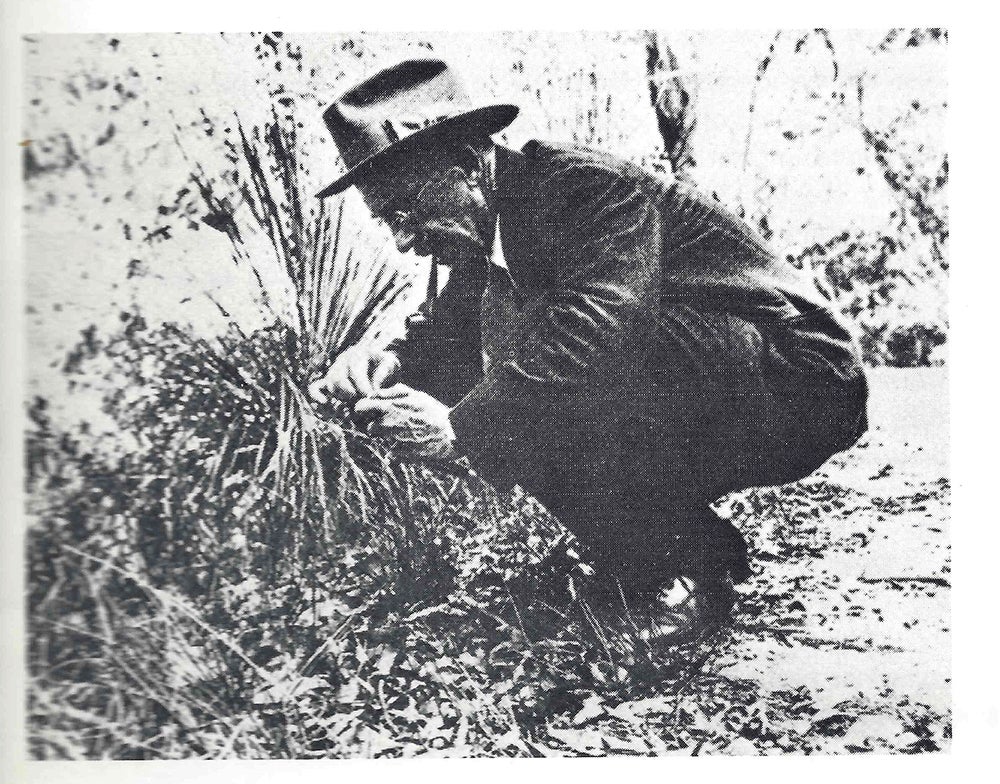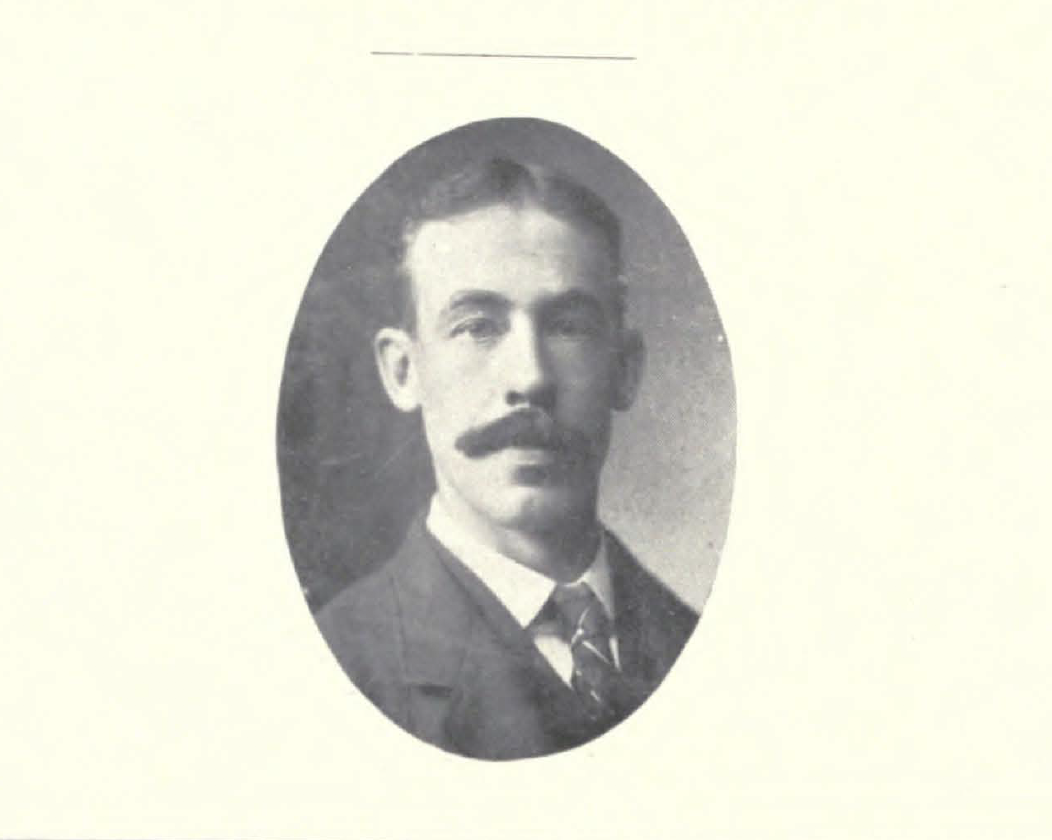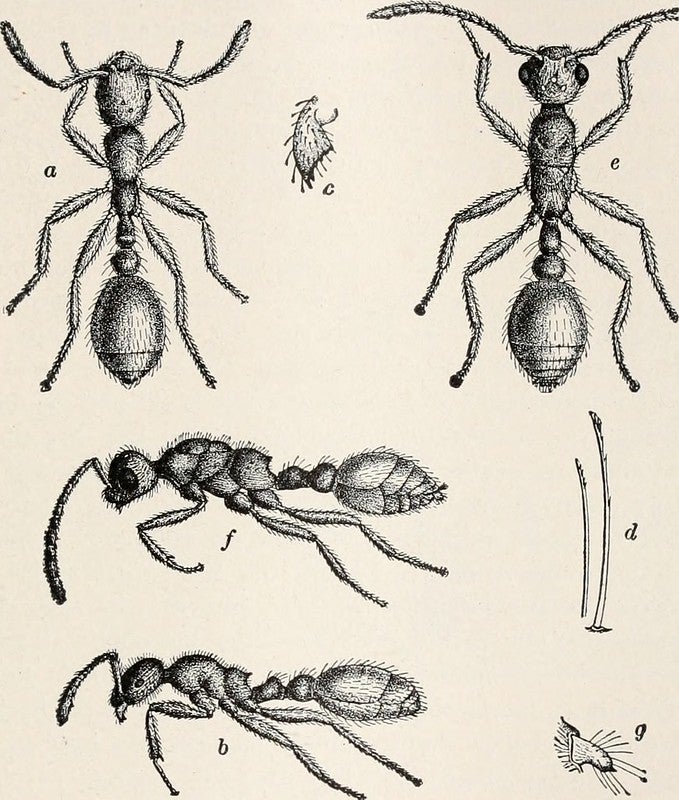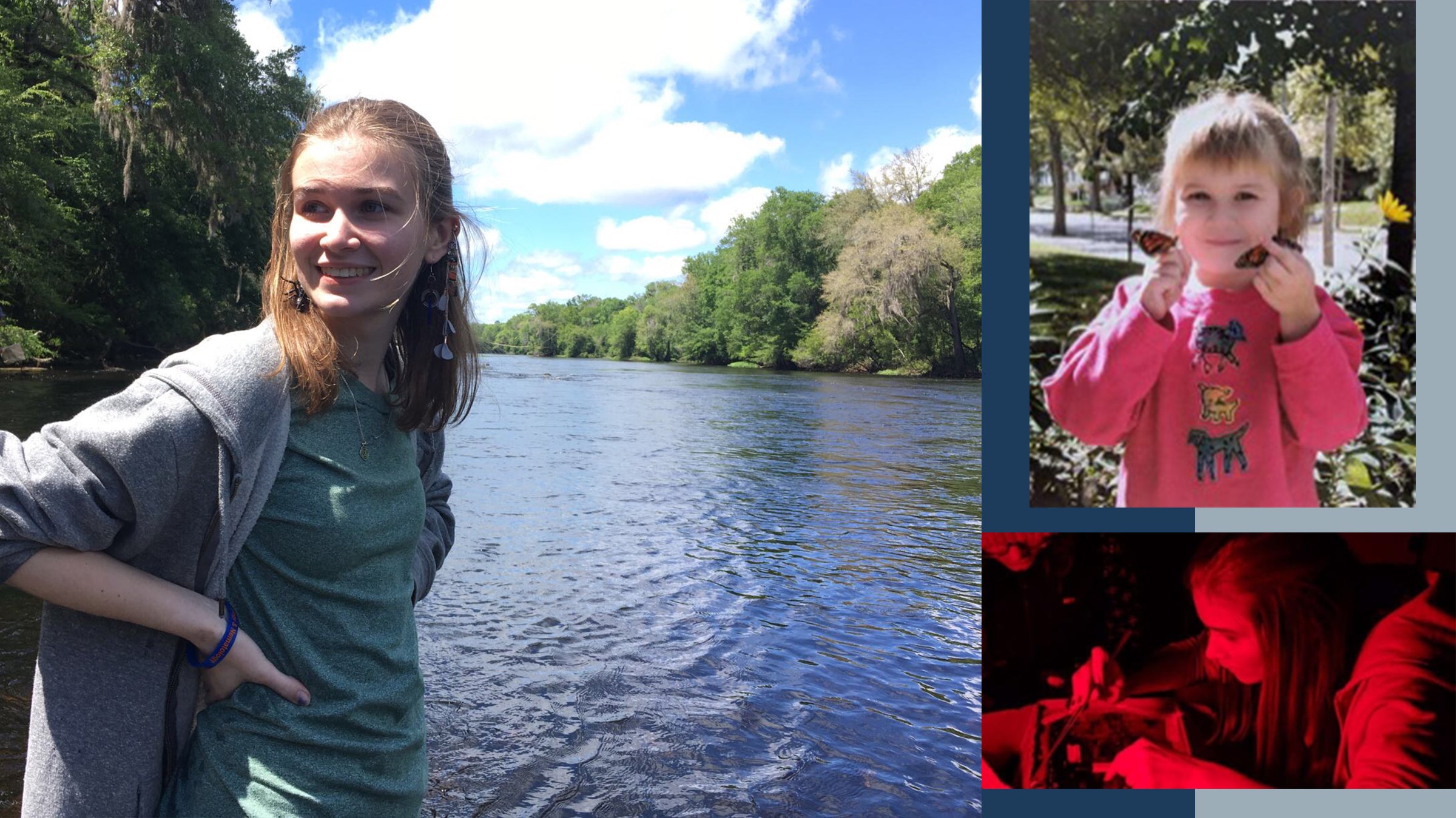
Right: From "Ants, Their Structure, Development, and Behavior" (1910)
William Morton Wheeler (1865 – 1937) was an American entomologist, myrmecologist, and professor. He is considered a taxonomist of the highest order, and became a leading authority on the behaviors of social insects. He also made descriptions of many species, including Pogonomyrmex maricopa, the insect with the highest measured LD50 against mammals of any measured venom. Two of Wheeler’s works: Ants: Their Structure, Development, and Behavior (1910) and Social Life Among the Insects (1923), long served as standard references. Wheeler’s tenure at UT Austin was very short (1899-1903), but marked the start of his focus on ants, which was an area in which he received particular renown.
Wheeler was born on March 19, 1865, in Milwaukee, Wisconsin. Due to what Wheeler himself calls “my own persistently bad behavior,” Wheeler’s father transferred him to a local German academy that imposed strict discipline on its students. Wheeler learned several languages and took an interest in the museum of natural history at the institution.
Around 1884 when Wheeler was a young man, an incident occurred which he says “was to influence my whole life.” That incident would be when Dr. Henry Augustus Ward of Ward’s Natural Science Establishment would come to Milwaukee, bringing with him a collection of specimens of birds and mammals. Wheeler became fascinated and volunteered to help Ward prepare the collection. Ward was impressed by the young man’s tenacity and offered him a job at the Natural Science Establishment. Wheeler’s role was to identify and list bird and mammal specimens and prepare catalogues. He would later be made foreman and spend his time identifying and arranging the collection of shells, echinoderms, and sponges.

Wheeler collecting ants during a field trip to Australia, around 1930.
In 1885, Wheeler wanted change, a theme that played out through his life. He stated: “Of active industrious young men, there seem to be two types. One of them accepts a given environment and is not only satisfied with its routing and constantly recurring human contacts but prefers it to any change. … Those of the other type, probably endowed with a more unstable if not more vivid imagination and with a peculiar defence [sic] reaction,…soon exhaust the possibilities of their medium, like fungi that burn out their substratum, and become dissatisfied and restless until they can implant themselves in fresh conditions of growth.” So to replant himself, Wheeler left Ward’s to begin a career as an educator, starting as a teacher of German and physiology at the Milwaukee High School. It was around this time that Milwaukee would become an active center of zoological activity. He would learn embryological techniques under Dr. William Patten at the Allis Lake Laboratory. Later, he would work as a custodian at the Milwaukee Public Museum until he accepted a fellowship at Clark University to study under embryologist Charles Otis Whitman. Here, Wheeler secured his doctorate in 1892 in philosophy. His dissertation was titled “Contribution to Insect Embryology.”
However, Wheeler was dissatisfied with Clark University’s lack of support for student research as well as the friction he felt from the older faculty. Luckily, the University of Chicago offered Dr. Whitman a position, and he brought Wheeler with him to the newly-opened university.
Here Wheeler would serve as instructor in embryology. In 1897, Wheeler became assistant professor, but would also do research in Europe at the Zoological Institute at the University of Würzburg, the Naples Zoological Station, and the Institut Zoologique at Liege, Belgium. His five years in Chicago were characterized by a predominant focus on insects.
As Wheeler had varied interests outside of entomology, he would soon be looking elsewhere to expand his interests. In 1899, he was offered a “Professorship in Zoology” at the University of Texas at Austin. At this time, Austin was a fraction of the size it is today, and considered to have a “pioneering” academic atmosphere. Wheeler came to UT as an embryologist, with a focus on grasshoppers. During his four-year tenure, he reorganized the department of zoology. Also, he became primarily interested in ants which would become the predominant group of insects he studied, but he also wrote papers on organic evolution. In their younger years, several notable entomologists like Charles Brues and Axel Melander would come to Austin to study in Wheeler’s lab. Other students would include Alfred Kinsey and Otto Plath, entomologist and father to writer Sylvia Plath.
But why, in all places, did Wheeler become focused on ants while in Austin? At the time, Central Texas was considered the northern limit of neotropical ants. There wasn’t much study being done on ants in this area during Wheeler’s time. North American ant studies focused more on species in the North Eastern part of the states, species that were very similar to those in Europe. While Wheeler worked on grasshoppers, several of Wheeler’s students like Brues and Melander would bring in species of ants Wheeler had never seen before, leafcutter ants, army ants, and fire ants. Thus, his curiosity was stoked, a curiosity that would last the rest of his life.
However, the four years of laboratory management and teaching at UT left him weary, and in 1903 he accepted the position of curator of invertebrate zoology at the American Museum of Natural History in New York. Here he organized and arranged the Hall of Invertebrate Life, in addition to continue his work on ants.
After five years of museum work, the call to teach would return. In 1908, Wheeler became professor of economic entomology at Harvard. In 1915, he became the dean of the Bussey Institution at Harvard, a highly regarded biological institute. He was appointed in 1926 to be associate curator of insects at the Museum of Comparative Zoology, and from this time until his retirement in 1933, he was professor of entomology.
On April 19th, 1937 at the age of 72, Wheeler would die suddenly on the Boston-bound platform at the Harvard subway station. He was survived by his wife, Dora Bay Emerson, and two children, Ralph and Adeline.
Wheeler’s primary contribution was founding modern myrmecology in North America, being the first internationally influential ant scientist from here.
Additionally, Wheeler was an active collector of specimens, and made it a point to travel to regions that were not well known entomologically at the time. These places included Australia, Hawaii, and many places in the Caribbean and Central America. Wheeler was an avid writer, and his bibliography contains about 467 titles, totaling over 10,000 pages. Additionally, many species were named after him. A few of these are: Cyphomyrmex wheeleri, Technomyrmex wheeleri, Octostruma wheeleri, Formica wheeleri, and Camponotus wheeleri.

From the 1903 Cactus yearbook.
Obituaries and biographies on Wheeler talked of his energy, sense of humor, attention to detail and love of reading various subjects from classical literature to recent science discoveries. Wheeler also wrote prose, which is evident in his numerous papers. His interest in ecology, sociology, and psychology served and complemented his research on insect behavior and taxonomic work. His knowledge of the comparative branches of these sciences shaped his thoughts on evolution.
The Entomology Collection here at UT still holds pieces of Wheelers early history and legacy. When Wheeler left UT in 1903, he took most of his ant specimens to Harvard, and UT no longer has them. However, he did leave his general collections from the northeast and upper Midwest that travelled with him when he came here. Now, the Entomology Collection has hundreds of wasps, flies, and assorted insects of his from the 1890s from Wisconsin, Chicago, and Massachusetts.
Thanks to Dr. Alex Wild of the Entomology Collection and Dr. Larry Gilbert of Brackenridge Field Lab




